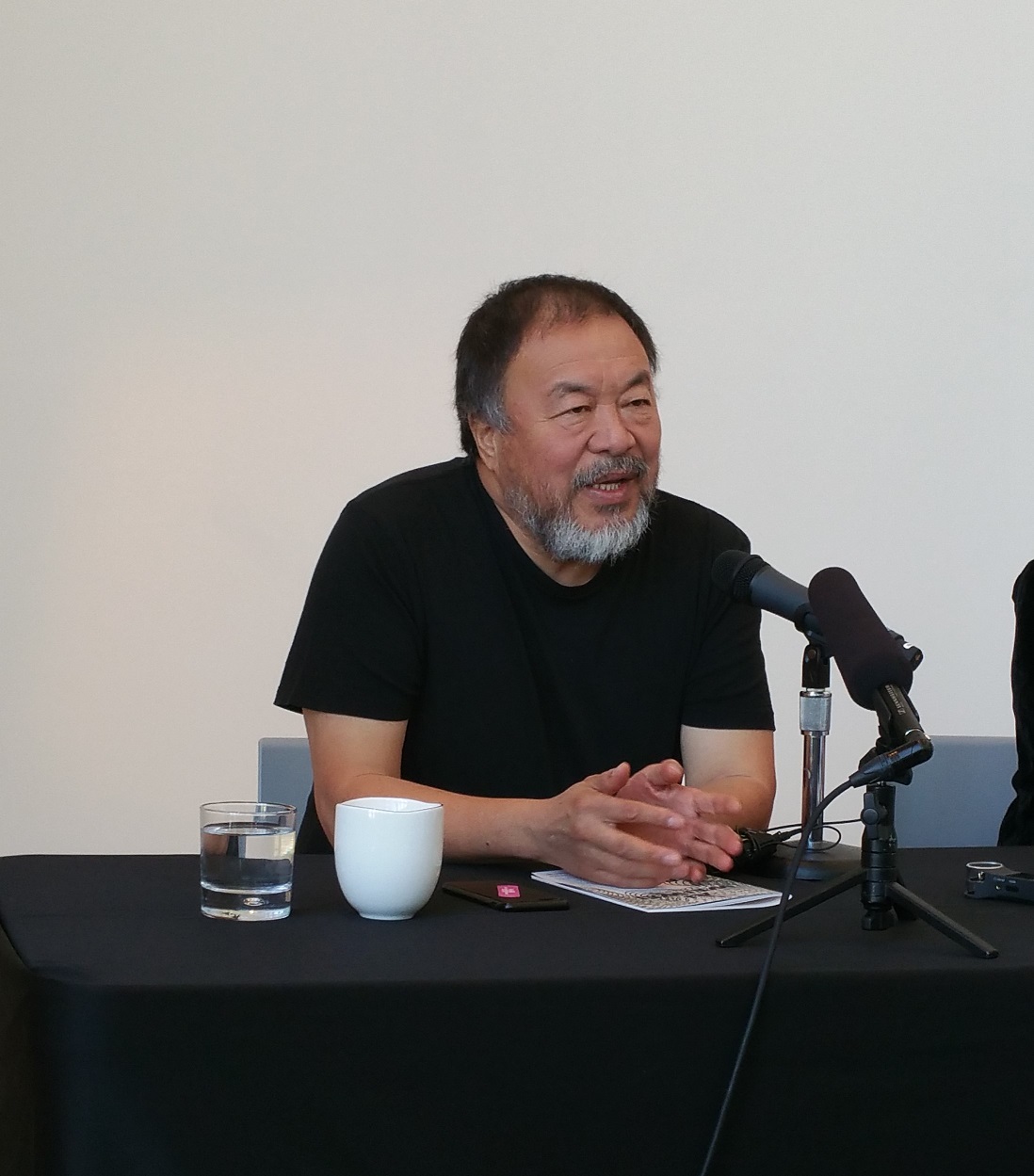
A large-scale exhibition of work by renowned Chinese dissident artist and activist Ai Weiwei opens this weekend at the newly renovated Mildred Lane Kemper Art Museum at Washington University in St. Louis.
The exhibit, “Ai Weiwei: Bare Life,” will be on view beginning Saturday, Sept. 28, coinciding with the museum’s reopening following a multi-million-dollar renovation and expansion that increased the museum’s public display space by 50 percent.

The artist, who appeared at the museum during a media preview today, said he was very pleased with the new Kemper exhibit space, calling it “just right” for his installations.
“Ai Weiwei: Bare Life” is divided into two sections, “Bare Life” and “Rupture,” and features more than 35 artworks, several of which have never been displayed in the United States.
The Kemper exhibit, Ai’s first major exhibition in the Midwest, includes site-specific projects like the massive wallpaper mural, “Bombs,” which measures approximately 65-feet long and 36-feet high, perfect for the curved, arching wall of the space’s Saligman Family Atrium. “Bombs” shows full-scale renderings of 43 weapons of mass destruction from countries such as Russia, Germany, the United Kingdom, Italy, Israel and the United States.
Another piece making its U.S. debut is “Tear Gas Canisters,” which consists of altered tear gas cans that were used by police against refugees.
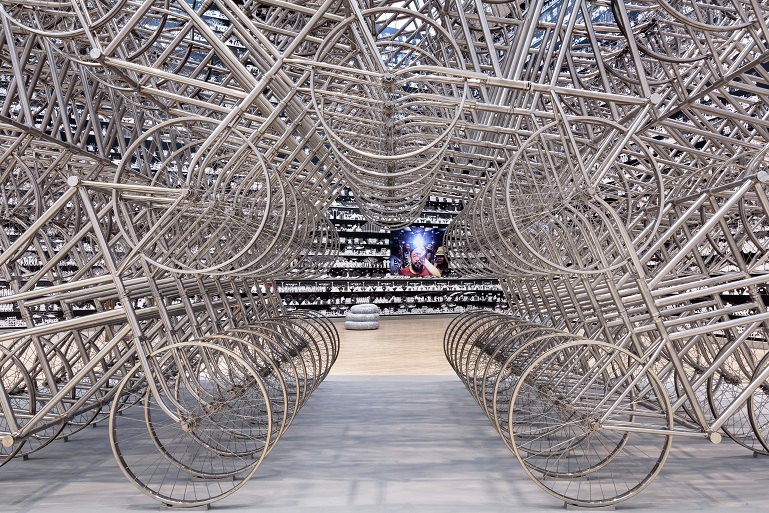
The breathtaking Ai Weiwei piece, “Forever Bicycles” is front and center within the exhibit’s “Bare Life” section. The mesmerizing display is made of 720 Forever bicycles – an iconic Chinese brand – which forms an arch for visitors to pass through.
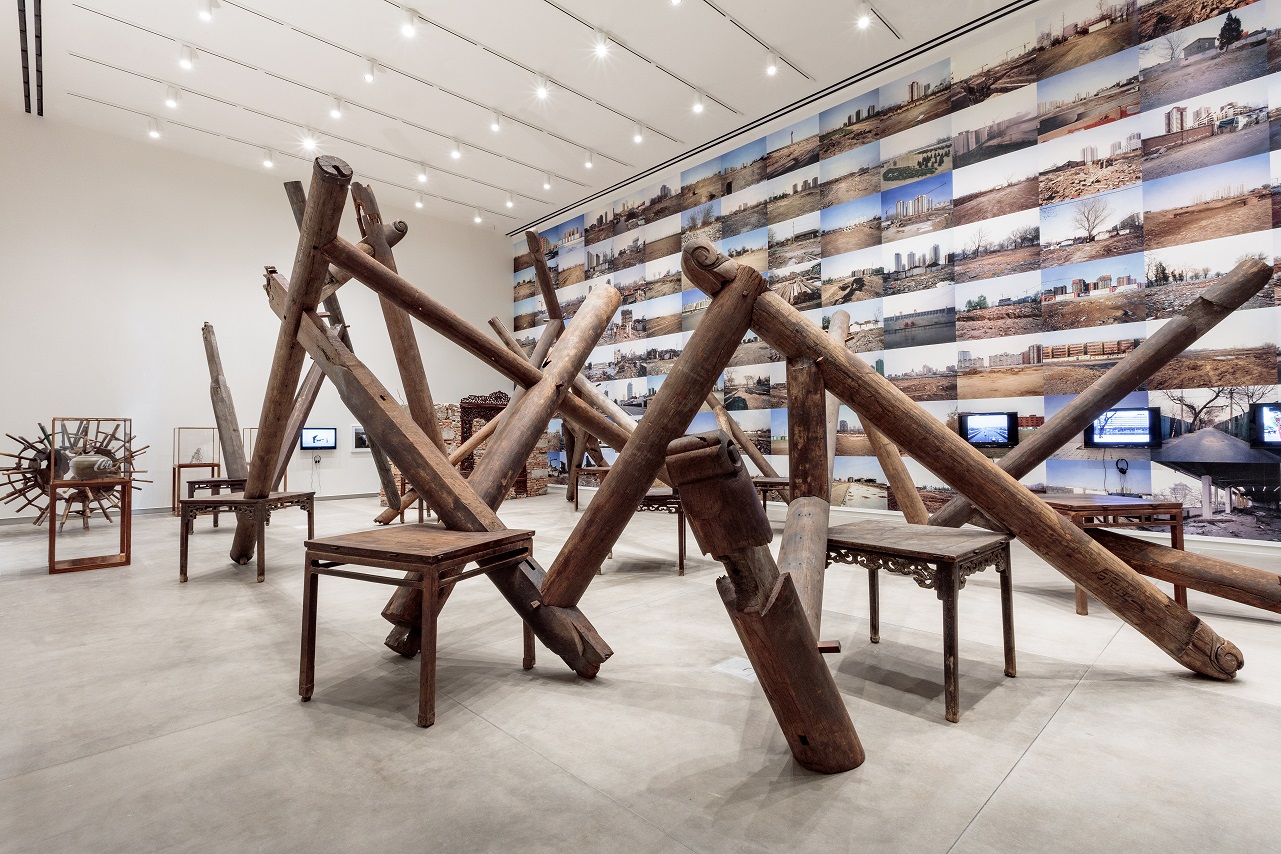
The monumental installation, “Through,” is the centerpiece of the exhibition’s “Rupture” section. Never before seen in the United States, it is made from colossal wooden pillars recovered from demolished temples. The artwork, symbolic of China’s ruptured history, crisscrosses the gallery, with the beams intersecting at various junctures to penetrate the tops of Qing-dynasty (1644-1912) tables.
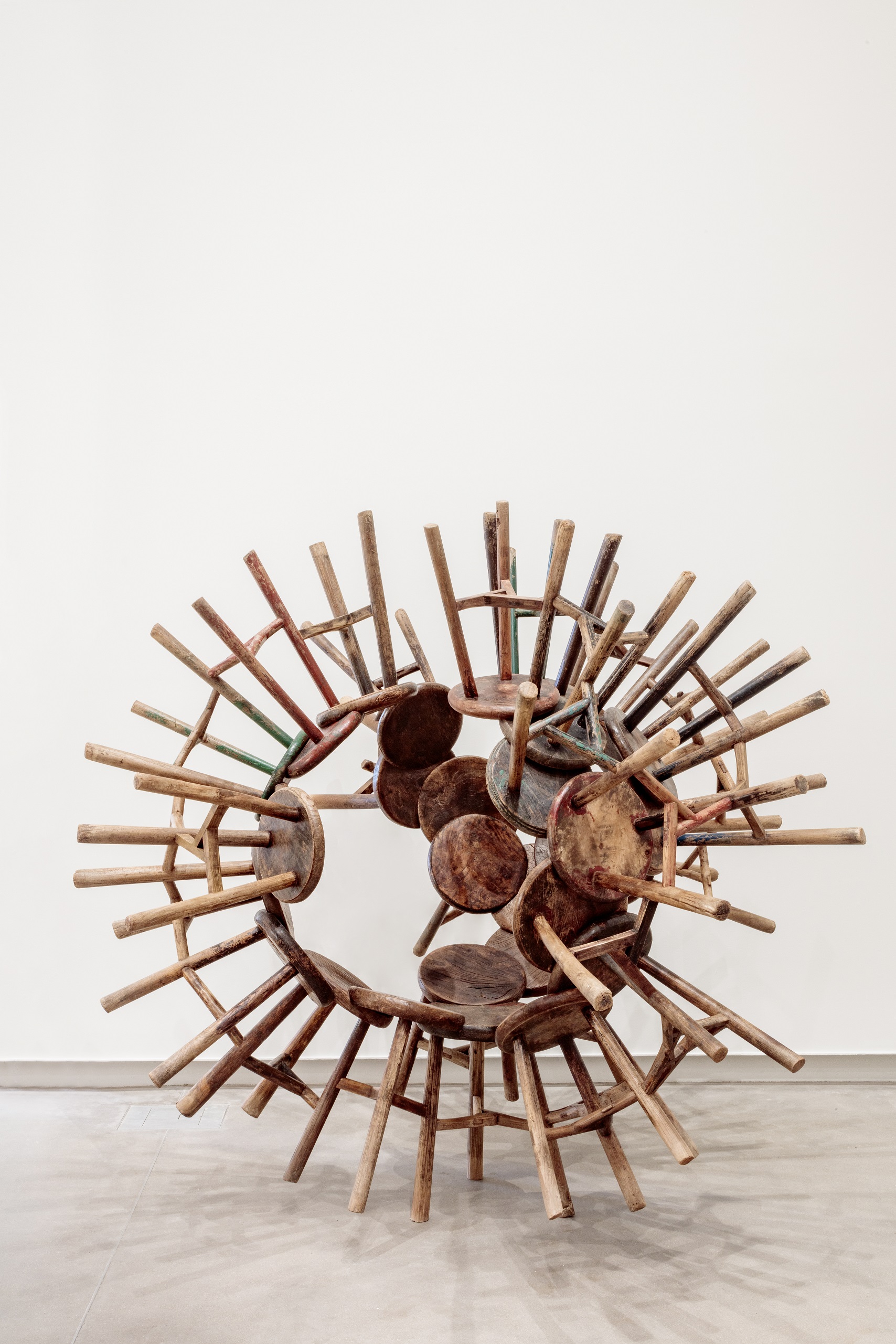
The “Rupture” section also contains iconic works such as “Table with Two Legs” and “Grapes,” which is made up of 34 connected wooden stools.
The pieces—some in a series, created over the last two decades in a wide variety of mediums—include sculptures, installations, photographs and films. Shown together, they provide new insight into Ai’s abiding concern for human rights and the global condition of humanity, while showcasing his profound engagement with Chinese culture past and present, especially the radical shifts that have characterized China in the new millennium.
Ai is internationally known for rigorous, compassionate and complex artworks that address themes of political, ethical and social urgency.
“He is one of the most important artists and humanitarians in today’s world,” Kemper Art Museum director and chief curator Sabine Eckmann remarked, when introducing Ai Weiwei during today’s preview.
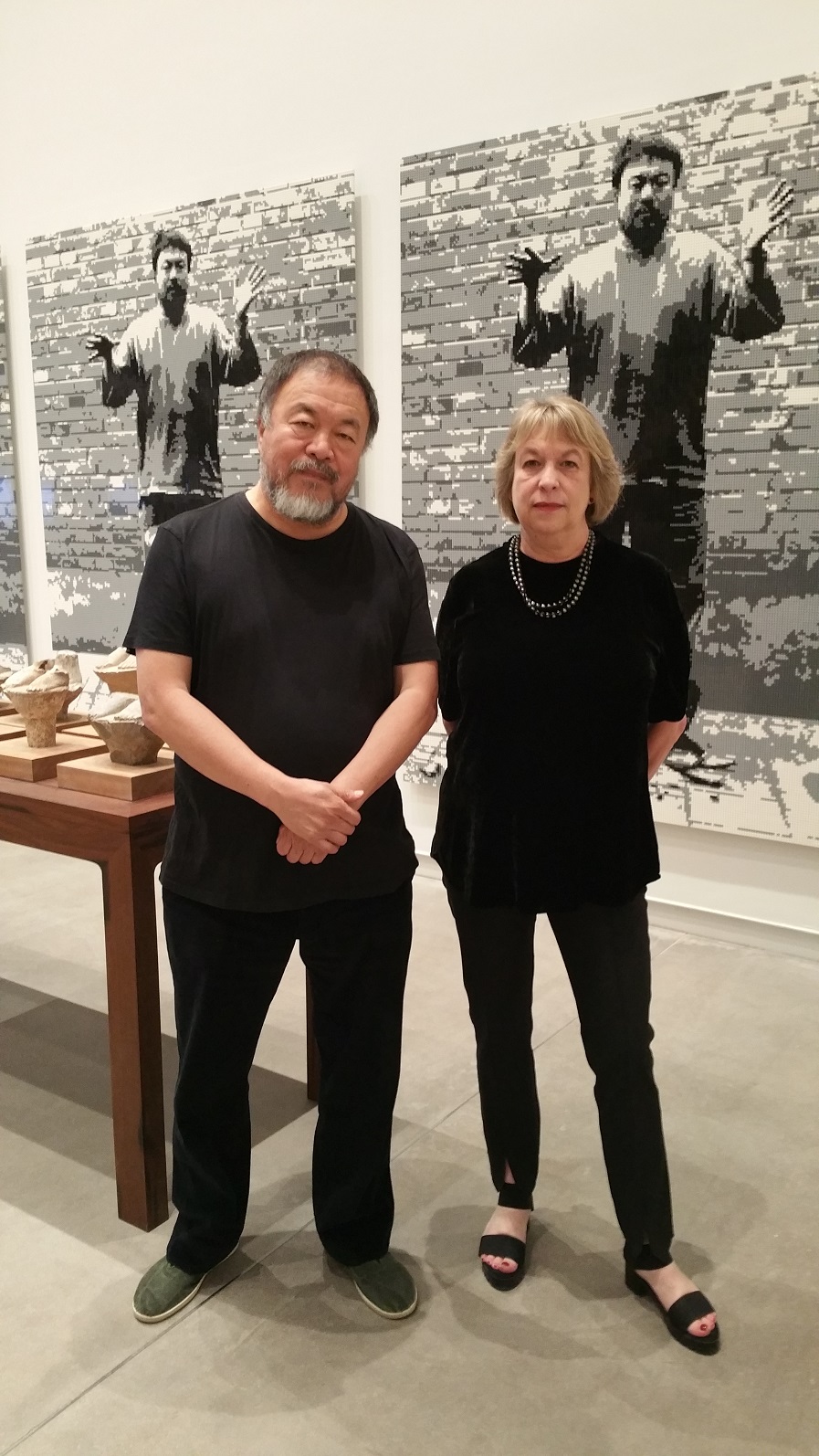
“Over the last decade, the Kemper Art Museum has explored the interconnections between art—especially conceptual art—and politics,” Eckmann said. “Continuing in this trajectory, ‘Ai Weiwei: Bare Life’ is focused on Ai’s creation of images that reconfigure the past in the present, employ a radical form of realism for political critique and elevate into the realm of visibility those whose humanity has been ignored. ”
Ai, who was born in Beijing in 1957, helped to establish the Beijing East Village artist colony, the China Art Archives & Warehouse independent art space and the architecture studio FAKE Design. He collaborated with Herzog & de Meuron on the “Bird’s Nest” stadium for the 2008 Beijing Summer Olympics. Through his investigations into the circumstances prior to and following the 2008 Sichuan earthquake, he emerged as a prominent government critic and was arrested in 2011. He remained under constant surveillance until 2015, when his passport was returned to him and he could leave the country. He currently lives and works in Berlin.
Designed by Ai and curated by Eckmann, “Ai Weiwei: Bare Life” at the Mildred Lane Kemper Art Museum will be on display from Sept. 28 through Jan. 5, 2020.
Celebrated Chinese Dissident Artist Ai Weiwei Brings Exhibit to St. Louis





